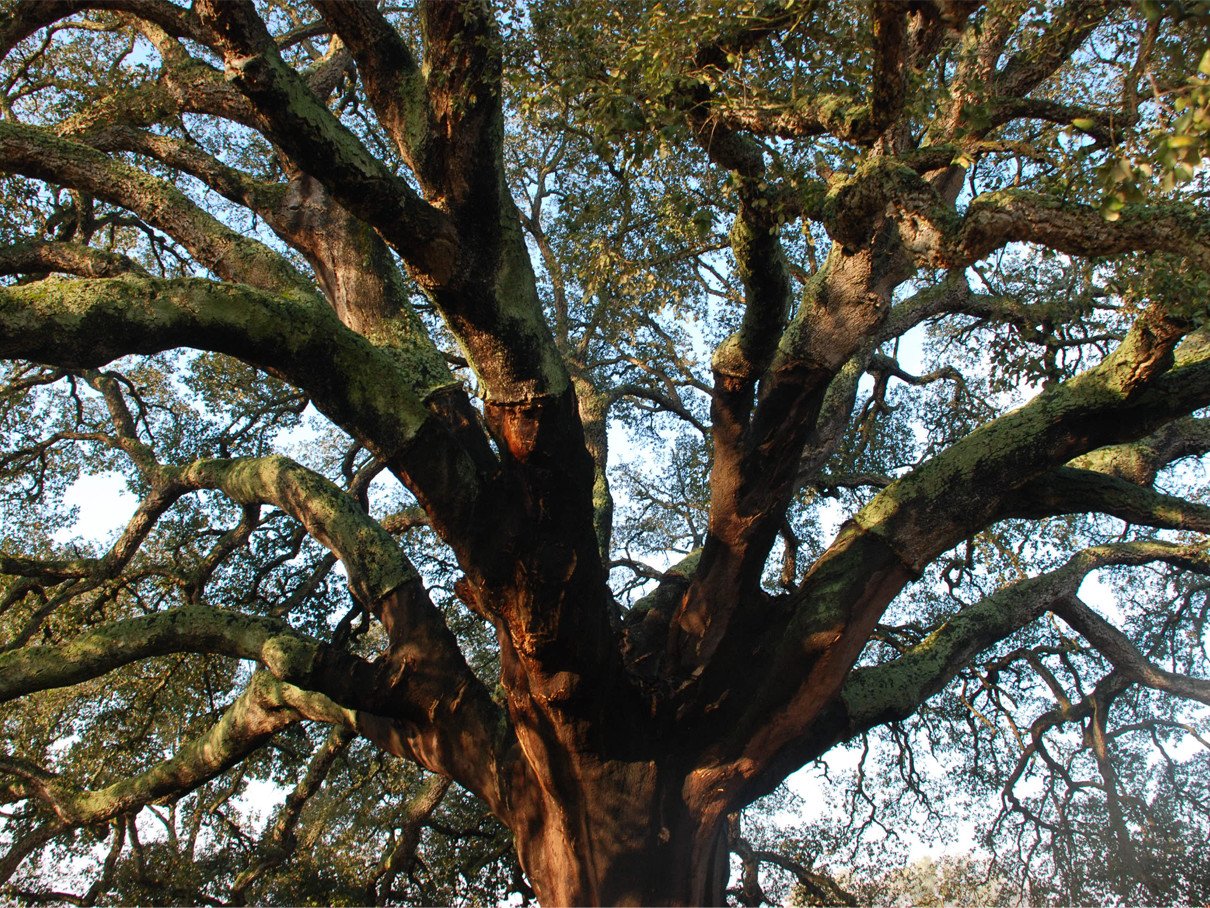
Cork Oak Trees
Though the Cork Oak (Quercus suber) can flourish in many climates, the conditions that favor commercial use lie in a fairly narrow swath that cuts through Western Europe and Northern Africa along the Mediterranean coast.
The cork forest is the dominant ecosystem in much of the arid coastal areas in its range. Thriving on poor, sandy soil, the cork forest is a valuable resource that provides food and habitat for indigenous mammals and birds. The oak canopy provides cover for other flora and its deep root system protects against erosion.
Because of good husbandry practices and recent plantings, the cork forest is undergoing a period of expansion. This bodes well for the future as the cork forest will continue to provide an irreplaceable natural environment while serving the wine industry.
The World’s Largest Cork Tree: The Whistler Tree
Named for the countless songbirds that occupy its dense canopy - the Whistler Tree is the most productive cork oak on record.
The Whistler Tree grows in the Alentejo region of Portugal and is over 230 years old. It has been producing the finest quality wine corks every nine years since 1820.
This year's harvest yielded 825kg of raw cork - enough for 100,000 wine bottles. As a comparison, the average cork oak produces material for 4,000 bottles.
The Whistler Tree was previously harvested in 2018 and on the traditional nine year schedule, will next be harvested in 2027.
The Whistler Tree is in excellent condition and is well on its way to produce a total lifetime production of over one million corks.
Want to add a Cork Oak Tree to your garden?
Here are some links to reputable nurseries for purchasing cork oak acorns and seedlings:
Cork Oak Trees in America
The Cork Oak is favored by many U.S. horticulturists as a hearty, evergreen shade tree. Mature trees can reach 75' tall and form a broad canopy of toothed, shiny dark green leaves that are silver-gray beneath. Chocolate brown acorns are held loosely in caps and provide food for bird and small animals.
The Cork Oak can be planted in a variety of well-drained soils and has water requirements ranging from dry to moderate. It is particularly favored in coastal regions as it is impervious to salt spray. The most important planting limitation is exposure to frost. Cork Oaks are recommended to Hardiness Zones 8 -11 (USDA).
These zones represent areas with minimum temperatures above 10°F. Some sources suggest that Cork Trees can also be planted in Zone 7 locations.
Cork trees are relatively common in the western United States, where they are available from numerous nurseries. Some of the more prominent examples are found at the UC Davis campus and on the grounds of Disneyland. During WWII concern over cork shortages led to grafting cork oak onto black oak rootstock. No significant commercial utilization has been recorded.


